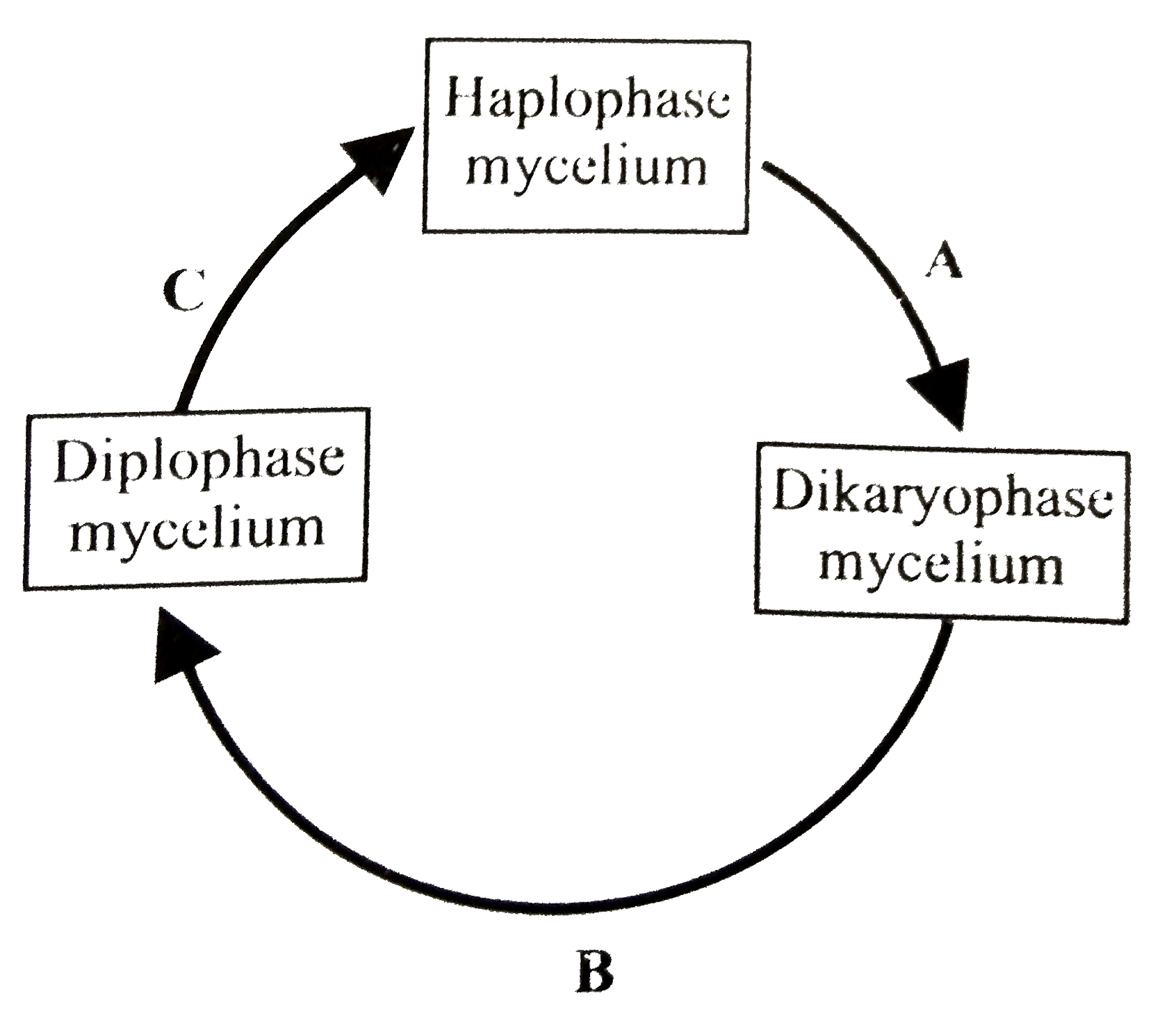In the life cycle of ascomycetes and basidomycetes cells are
Monokaryotic
Dikaryotic
both
None
The correct Answer is:C
To answer the question regarding the life cycle of Ascomycetes and Basidiomycetes, we will follow these steps:
1. Understanding Ascomycetes and Basidiomycetes:
- Ascomycetes and Basidiomycetes are two major groups of fungi classified based on their reproductive structures and methods of spore production.
2. Identifying Cell Types:
- In the life cycle of these fungi, we need to determine the type of cells present in their fruiting bodies.
3. Monokaryotic vs. Dikaryotic:
- Monokaryotic cells contain a single nucleus, while dikaryotic cells contain two nuclei.
- In the context of Ascomycetes and Basidiomycetes, we need to focus on the cells in their fruiting bodies.
4. Fruiting Bodies of Ascomycetes:
- In Ascomycetes, the spores are produced in structures called asci. Each ascus typically contains eight spores and is considered monokaryotic.
5. Fruiting Bodies of Basidiomycetes:
- In Basidiomycetes, spores develop on club-shaped structures called basidia. Each basidium has four projections and is also considered monokaryotic.
6. Conclusion:
- Since both Ascomycetes and Basidiomycetes have monokaryotic cells in their fruiting bodies, the correct answer to the question is that the cells are monokaryotic.
Final Answer:
The cells in the life cycle of Ascomycetes and Basidiomycetes are monokaryotic.
---
- Ascomycetes and Basidiomycetes are two major groups of fungi classified based on their reproductive structures and methods of spore production.
- In the life cycle of these fungi, we need to determine the type of cells present in their fruiting bodies.
- Monokaryotic cells contain a single nucleus, while dikaryotic cells contain two nuclei.
- In the context of Ascomycetes and Basidiomycetes, we need to focus on the cells in their fruiting bodies.
- In Ascomycetes, the spores are produced in structures called asci. Each ascus typically contains eight spores and is considered monokaryotic.
- In Basidiomycetes, spores develop on club-shaped structures called basidia. Each basidium has four projections and is also considered monokaryotic.
- Since both Ascomycetes and Basidiomycetes have monokaryotic cells in their fruiting bodies, the correct answer to the question is that the cells are monokaryotic.
The cells in the life cycle of Ascomycetes and Basidiomycetes are monokaryotic.
Topper's Solved these Questions
- BIOLOGICAL CLASSIFICATIONBOOK - AAKASH SERIESCHAPTER - BIOLOGICAL CLASSIFICATIONEXERCISE - EXERCISE-I (Kingdom Plantae and Kingdom Animalia)
15 Videos
- BIOLOGICAL CLASSIFICATIONBOOK - AAKASH SERIESCHAPTER - BIOLOGICAL CLASSIFICATIONEXERCISE - EXERCISE-II
43 Videos
- BIOLOGICAL CLASSIFICATIONBOOK - AAKASH SERIESCHAPTER - BIOLOGICAL CLASSIFICATIONEXERCISE - EXERCISE-I (Kingdom Protista)
77 Videos
- BIODIVERSITY AND CONSERVATIONBOOK - AAKASH SERIESCHAPTER - BIODIVERSITY AND CONSERVATIONEXERCISE - EXERCISE-II India - A major Source of Biodiversity and its Preservation
2 Videos
- BIOMOLECULESBOOK - AAKASH SERIESCHAPTER - BIOMOLECULESEXERCISE - EXERCISE - III (Previous AIPMT/NEET Questions) (Enzymes)
11 Videos
Similar Questions
Knowledge Check
Given is the representation of life cycle of members of classes Ascomycetes and Basidiomycetes. Select the correct option for processes A,B and C.
 AABCKaryogamyPlasmogamyMeiosisBABCPlasmogamyKaryogamyMeiosisCABCPlasmogamyMeiosisKarogamyDABCKaryogamyMeiosisPlasmogamy
AABCKaryogamyPlasmogamyMeiosisBABCPlasmogamyKaryogamyMeiosisCABCPlasmogamyMeiosisKarogamyDABCKaryogamyMeiosisPlasmogamyIn the moss life cycle, the sporophyte:
Aconsists of leafy green shootsBis the heart-shaped prothallusCconsists of a foot, a stalk, and a capsuleDis the dominant generation
Life Cycle of Plasmodium
View SolutionIn ascomycetes and basidomycetes, the dikaryotic cell is:-
View SolutionAssertion: In Ascomycetes and Basidiomycetes well distinct Dikaryophase is present during sexual life.
Reason: During sexual reproduction of Ascomycetes and Basidiomycetes plasmogamy is immediately followed by karyogamy.
View SolutionExplain the life cycle of mushroom.
View SolutionMan in the life cycle of Plasmodium is
View SolutionMost phases of the life cycles of plasmodial slime moulds are
View Solution
